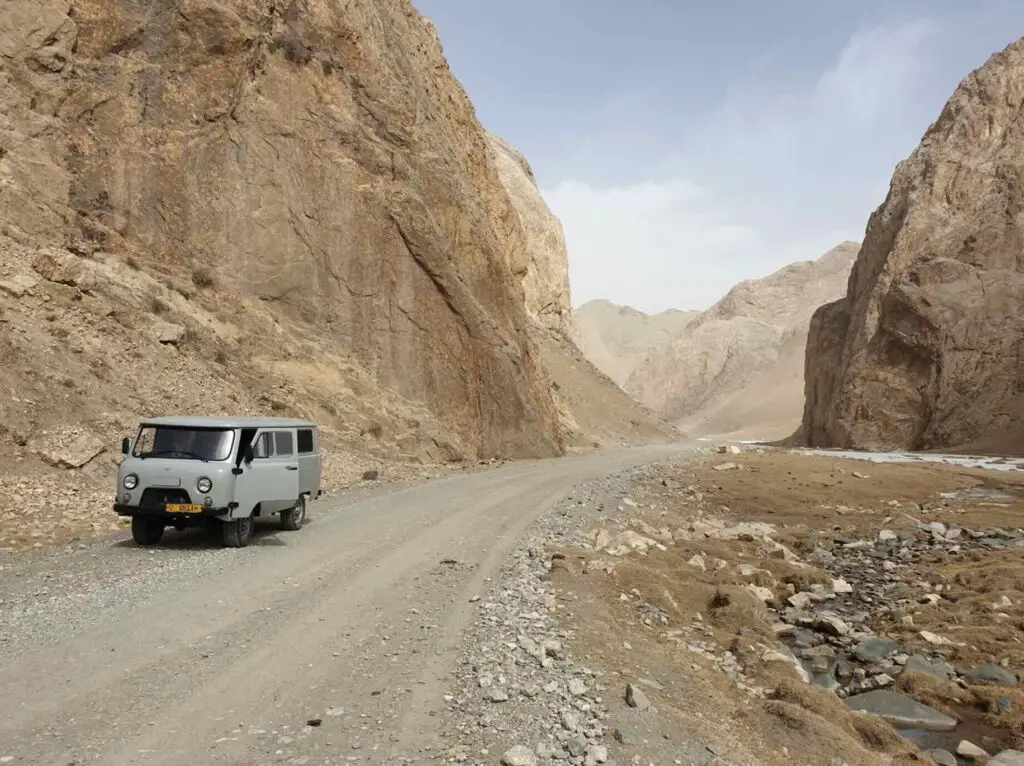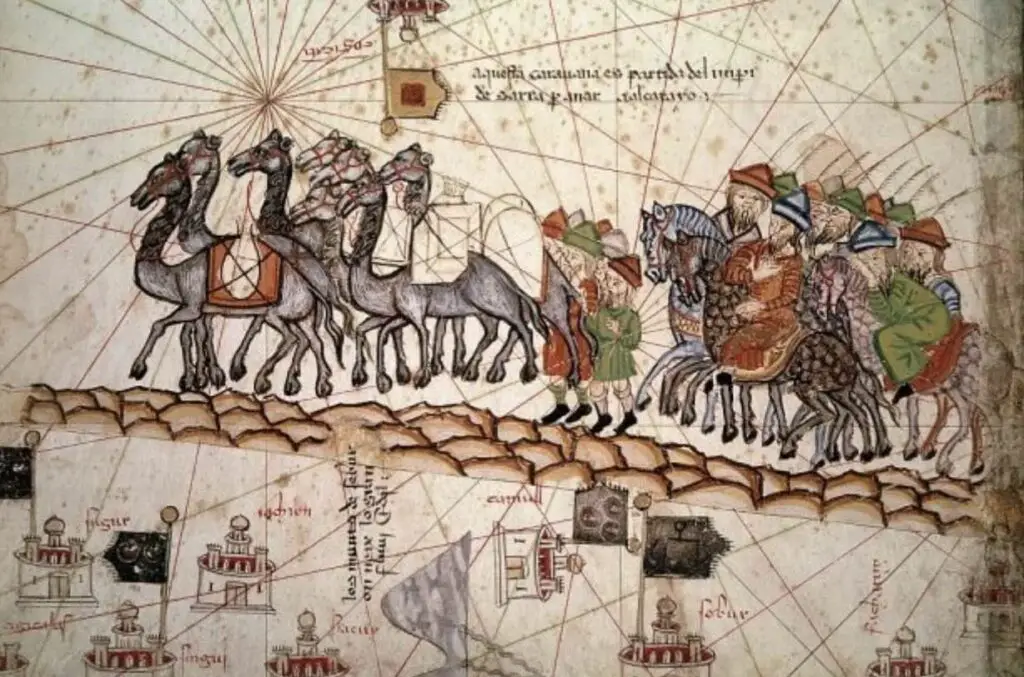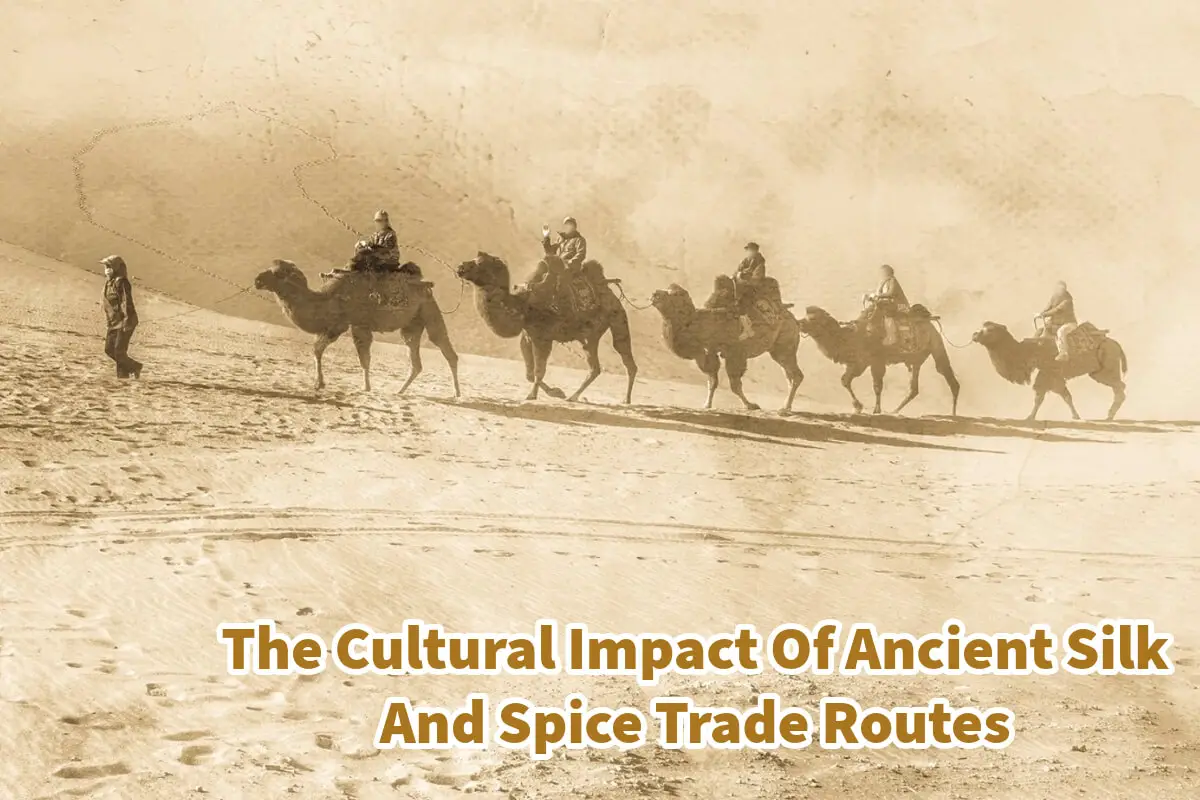The Ancient Silk and Spice Routes are often associated with the trade of luxurious goods like silk, spices, precious metals, and rare textiles. However, the significance of these trade routes goes far beyond commerce.
These ancient paths acted as conduits for transmitting culture, religion, language, and traditions across continents. By connecting the East and the West, these routes shaped civilizations and laid the groundwork for a shared global heritage that continues to resonate in modern society. In this blog post, we explore the cultural impact of the Silk and Spice Routes and how these trade routes influenced the regions they touched.
Table of Contents
- The Silk Road: A Web of Cultural Exchange
- The Spice Route: Aromatic Currents of Change
- Shared Art and Architecture
- Linguistic and Educational Exchanges
- The Cultural Melting Pot of Trade Cities
- The Spread of Religion and Philosophy
- Legacy of Cultural Adaptation and Resilience
- Related Questions
The Silk Road: A Web of Cultural Exchange
The Origins and Scope of the Silk Road
The Silk Road, a network of trade routes spanning over 4,000 miles, connected China with the Mediterranean, passing through Central Asia, Persia, and the Middle East. It began during the Han Dynasty (206 BC—220 AD) and facilitated the exchange of goods, ideas, and innovations for centuries.

Exchange Beyond Goods
The Silk Road was not just a trade route but a cultural bridge. Chinese silk, prized for its texture and elegance, became a coveted commodity in Rome and beyond, symbolizing wealth and status. But the interactions between merchants, travelers, scholars, and soldiers led to something even more valuable: cultural assimilation and exchange.
- Art and Aesthetics: The Silk Road facilitated the spread of artistic techniques and styles. For example, Buddhist art in Central Asia and China incorporated Greco-Roman influences from artisans and traders from the West.
- Music and Performance: Musical instruments and performance traditions also traveled these routes. For instance, the Chinese pipa (lute) originated with Persian instruments introduced via the Silk Road.
- Cuisine: Foods such as noodles and certain spices made their way from the East to the West, impacting culinary traditions on both sides. The blending of ingredients created new dishes that reflect a fusion of cultures.
Religion and Philosophy
The Silk Road was instrumental in spreading major world religions, including Buddhism, Zoroastrianism, Islam, and Christianity. Monks and scholars carried Buddhist teachings from India to China, where the religion adapted to local customs and flourished. Likewise, Islamic traders from the Arabian Peninsula shared their beliefs with communities along the route, fostering mutual respect and religious diversity.
Due to its location at the crossroads of the Silk Road, the city of Dunhuang in China became a melting pot of religious and cultural practices. The Mogao Caves, filled with murals and sculptures, serve as a testament to this fusion of spiritual and artistic traditions.
The Spice Route: Aromatic Currents of Change
The Scope and Importance of the Spice Route
The Spice Route, which connected Southeast Asia, India, the Middle East, and Europe, was essential to trade spices like cinnamon, cloves, nutmeg, and black pepper. Spices were valuable commodities and symbols of wealth used for preservation, medicine, and religious rituals.

Cultural and Culinary Transformations
The demand for exotic spices in Europe led to the exploration and eventual colonization of distant lands. However, before European powers dominated, the Spice Route was already a channel for cultural transmission.
- Cuisine and Cooking Methods: The movement of spices transformed cooking practices in various regions. Indian spices such as black pepper and cardamom found their way into Middle Eastern and Mediterranean dishes, enriching their flavor profiles.
- Medicinal Practices: Knowledge about the medicinal uses of spices was shared along these routes. For example, traditional Ayurvedic medicine influenced Greek and Roman medical practices, integrating natural remedies like ginger and turmeric for their health benefits.
- Festivals and Traditions: The spread of spices also brought associated traditions. The use of saffron in celebrations and religious rites spread across cultures, becoming a shared element in rituals from India to the Middle East.
Language and Literature
The Spice Route facilitated the exchange of language and literature. Trade necessitated communication, leading to the development of linguistic hybrids and the adoption of loanwords across languages. For instance, many words related to spices and commerce in Western languages have their roots in Sanskrit, Tamil, or Arabic.
The English word “sugar” comes from the Arabic sukkar, which itself was influenced by Sanskrit sharkara. Similarly, “ginger” traces back to the Sanskrit srngaveram, showcasing how the Spice Route’s trade not only affected goods but also language.
Shared Art and Architecture
Blended Artistic Traditions
The convergence of different cultures through trade routes led to unique architectural and artistic styles. In Samarkand, Uzbekistan—once a central Silk Road hub—the influence of Persian, Indian, and Chinese art is visible in the elaborate mosaics and tile work of monuments like Registan Square.
- Islamic and Persian Influences: The intricate patterns and calligraphy in Islamic art traveled along the Silk Road, influencing Buddhist and Hindu art in Central Asia.
- Architecture: The use of domes and minarets, hallmarks of Islamic architecture, spread from the Middle East to India, as seen in the design of the Taj Mahal. This iconic structure blends Islamic, Persian, and Indian architectural styles, reflecting centuries of cultural interaction along the trade routes.
The Spread of Crafts and Techniques
Textile weaving, pottery, and metalworking techniques were exchanged through the Silk and Spice Routes, enriching local crafts with new methods and materials. For instance, Chinese silk-weaving techniques influenced textile production in Central Asia and Persia, resulting in shared motifs and designs that still appear in traditional garments and fabrics today.
Impact on Modern Art:
Modern artistic expressions reflect the fusion of styles and techniques facilitated by these trade routes. For example, motifs from Persian miniatures and Chinese landscape paintings have been adapted into contemporary art forms worldwide.
Linguistic and Educational Exchanges
The Development of Trade Languages
The necessity for communication between traders from different backgrounds led to the creation of trade languages or lingua franca. One notable example is the development of the Silk Road’s various trade dialects that incorporated elements of Persian, Arabic, Chinese, and Turkic languages.
Educational and Scientific Exchanges
Trade routes also facilitated the movement of scholars and scientists, leading to the exchange of knowledge that propelled advancements in various fields. The Indian numeral system, for example, was transmitted to the West through Arabic scholars who traveled these routes, ultimately laying the foundation for modern mathematics.
Case Study: The House of Wisdom:
The House of Wisdom was a beacon of learning during the Islamic Golden Age in Baghdad. Scholars from different cultural backgrounds, including Persians, Greeks, and Indians, gathered to translate texts on mathematics, astronomy, and medicine, disseminating this knowledge along the trade routes.
The Cultural Melting Pot of Trade Cities
Cosmopolitan Trade Hubs
Cities along the Silk and Spice Routes, such as Constantinople (modern-day Istanbul), Venice, and Malacca, became cosmopolitan centers where cultures merged. These cities were more than just commercial centers; they were melting pots of traditions, languages, and religions.
- Constantinople: As a key node on the Silk and Spice Routes, Constantinople was a meeting point for traders from Europe, Asia, and Africa. The city’s art, food, and architecture blend Byzantine, Islamic, and European influences.
- Malacca: This Malaysian port city was vital for the spice trade and a point of convergence for Chinese, Indian, Arab, and European traders. The city’s rich heritage is still seen today in its unique blend of Malay, Chinese, and European architecture and cuisine.
Cultural Legacies in Modern Societies
The diverse exchanges in these trade cities left lasting legacies still evident today. For instance, the multicultural influences in Istanbul’s cuisine, music, and fashion trace back to its days as a trade capital on ancient routes.

The Spread of Religion and Philosophy
A Corridor for Spiritual Exchange
Trade routes played a pivotal role in disseminating religious ideas and philosophical concepts. The Silk Road, in particular, was instrumental in spreading Buddhism from India to East Asia. Monks traveled alongside merchants, establishing monasteries as centers for learning and spiritual practice.
- Hinduism and Buddhism: These religions spread to Southeast Asia via the Spice Route, influencing the cultural and spiritual practices of regions like Bali, Cambodia, and Thailand.
- Islam: The spread of Islam was closely tied to trade along the Silk and Spice Routes. Muslim merchants significantly introduced their faith to new regions, blending Islamic practices with local customs in Indonesia and East Africa.
Influence on Local Traditions
The integration of new religious ideas often merged with existing beliefs, creating unique syncretic traditions. For example, Islam intertwined with older shamanistic practices in Central Asia, resulting in a rich tapestry of religious customs that persist today.
Legacy of Cultural Adaptation and Resilience
Modern Echoes of Ancient Routes
The cultural exchanges along the Silk and Spice Routes left deep imprints that resonate in modern society. The fusion of traditions, foods, languages, and religions laid the foundation for what we now see as global culture.
- Food and Festivals: The global popularity of dishes like Indian curries, Chinese noodles, and Middle Eastern kebabs highlights the enduring impact of these trade routes on cuisine. Festivals such as the Persian Nowruz or the Indian Diwali have been celebrated far beyond their points of origin, influencing global holiday traditions.
- Art and Fashion: Patterns, fabrics, and motifs that once traveled these ancient routes appear in contemporary fashion, interior design, and global art.
The ancient Silk and Spice Routes were much more than trade corridors; they were lifelines that wove together diverse cultures, spreading ideas and traditions that enriched societies across continents. The cultural impact of these routes is evident in the food we eat, the languages we speak, the festivals we celebrate, and the shared artistic and spiritual practices that connect us.
By understanding the legacy of these trade routes, we gain a greater appreciation for the interconnectedness of human history and how ancient exchanges continue to shape our world. For travelers seeking meaningful journeys, exploring the remnants of these routes can provide a unique glimpse into a history that transcends borders and time.
At A Bus On A Dusty Road, we talk about history, travel, life, sailing, and ex-pat living. We are all about “Living Life As A Global Citizen.” We explore social, cultural, and economic issues and travel.
We would love to have you be part of our community. Sign up for our newsletter to keep up-to-date by clicking here. If you have any questions, please contact me, Anita, by clicking here.
Listen to our Podcast called Dusty Roads. You can find it on all major podcast platforms. Try out listening to one of our podcasts by clicking here.
Subscribe to our A Bus On A Dusty Road YouTube Channel with great videos and information by clicking here.
Related Questions
Why Koi Fish Are Considered Good Luck By The Japanese?
Koi fish are a beloved symbol in Japanese culture and have long been considered a symbol of good luck and prosperity.
There are many reasons why Koi Fish are considered to be good luck symbols by the Japanese. One is because they are known to bring good luck and be able to swim upstream. Another is that they are held in high regard in Japanese culture.
You can read more about Why Koi Fish Are Considered Good Luck By The Japanese? by clicking here.
Are Korean And Japanese Cultures Similar Or Different?
Korean and Japanese cultures can have many similarities in how they view family, education, society, and life. Both countries were productive societies, and getting a good education is essential. But even with these basic similarities, they also have many differences in their language, culture, religion, history, and food.
By clicking here, you can discover Are Korean And Japanese Cultures Similar Or Different?
Are The Hmong From Japan?
There is no evidence to show that the Hmong are from Japan. History indicates that the Hmong have lived in China for thousands of years. Over the years, the Hmong had many rebellions with the Chinese as the Imperial Chinese tried to force them to assimilate. Several bloody revolts within China caused many Hmong to leave China and migrate to Vietnam, Laos, Thailand, and Myanmar (Burma).
By clicking here, you can discover Are The Hmong From Japan?

